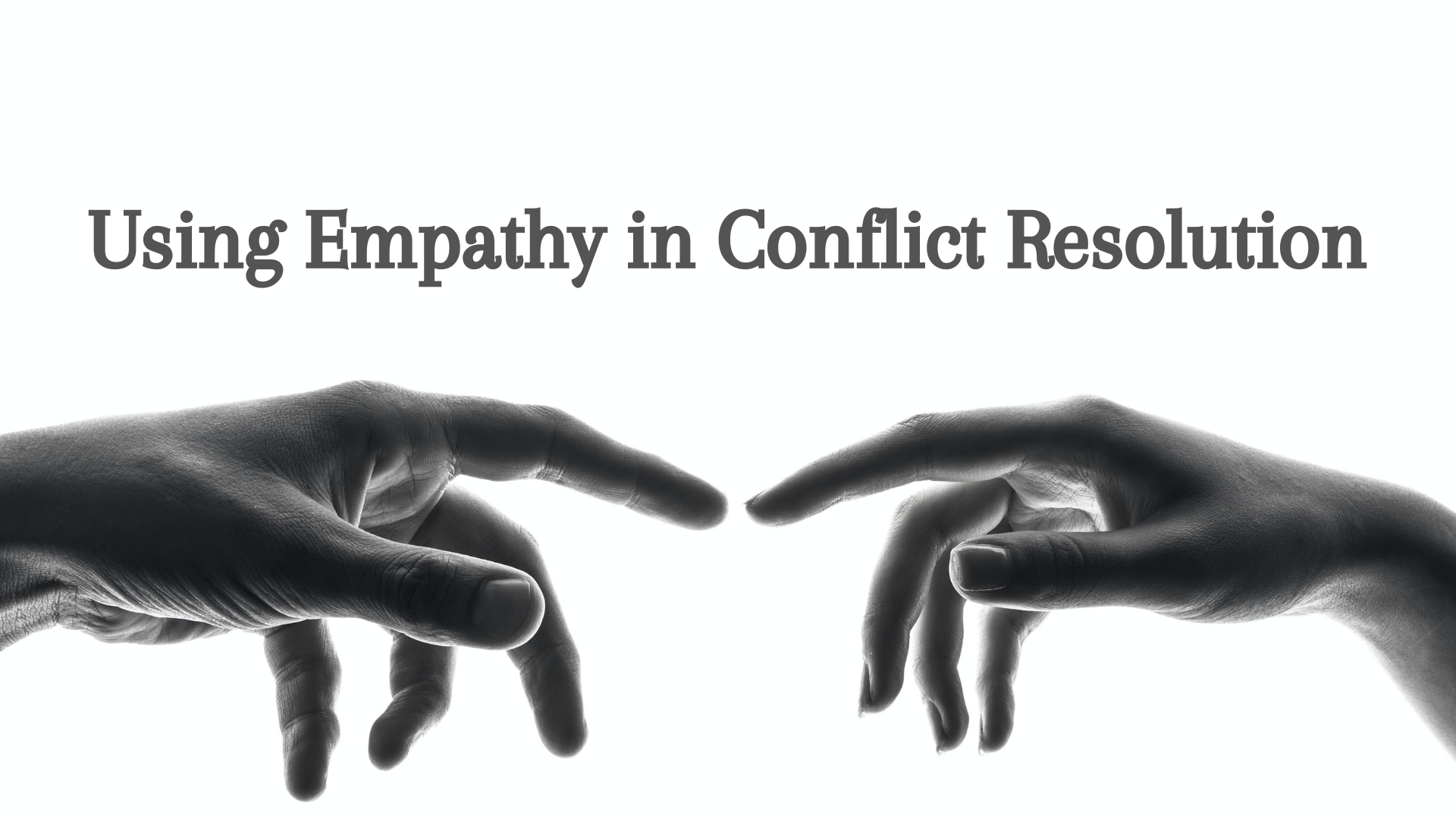Why Your Disagreements (Might) Suck
/Six argumentative approaches and why you need to know them.
Overview
There are six different approaches to the subject matter of a conflict or argument.
We need to know which positions or approaches we are using so that we can know what kind of argument we are having.
Arguing using two different approaches is the main reason why our arguments are, often, unproductive.
Part One — There Are Different Kinds of Arguments?
The position you bring to a conflict or disagreement absolutely shapes the content of your argument. Rarely, however, are we able to articulate which approach we are using.
Because, yes, there are multiple kinds of disagreements.
And they are based on the position — or approach — you enter into the argument with.
These various approaches, as it happens, have less to do with what you are saying and more to do with the framework that has formed your position.
If you are in an argument and you are arguing based on one kind of approach to the subject matter and the other person has taken a different approach, you are going to have a hell of a time coming to any kind of consensus, conclusion, or mediated resolution.
This, in my opinion, is why our disagreements usually suck.
Part Two — What Do You Think About Donald Trump?
Ah, nothing like a contemporary, political subject to illustrate just how messy this concept is. Yet, this might be the clearest example of how approaching argumentative content from different categories or perspectives drastically impacts your outcome.
One’s argumentative approach will impact how one answers this question.
Someone supports Trump because of a stance on a particular policy.
Someone else can’t support a president who is immoral.
Someone else says they don’t care about personality, but only economic or legislative statistics.
Or, someone supports/doesn’t support Trump simply because they are a conservative/liberal.
I’ve even heard folks clamor — in a stroke of apparent elevated consciousness — that they have majestically stepped aside from their political affiliation and flopped sides (after so many years of being an ardent supporter of their party) because they are doing the right thing.
And relishing in their own woke-ness.
This, too, is its own argumentative approach.
Let me be clear — I am not a member of any political party and, for the most part, I really do not care about political polemics. However, the above disagreements are a wondrous example of how various stances are intrinsically shaped by an approach to the subject matter.
Further, if the above list turned into a debate, the argument would go in every direction but forward.
Simply put — we are, often, not arguing about the same things.
Part Three — Six Argumentative Approaches
What are the categorical types of formulations that shape our positions in a conflict or argument?
1 — Pseudo-Argument
This one isn’t completely a type; it is more the lack of a type.
A pseudo-argument approach is one where there is an apparent conflict and possibly even lots of yelling, but none of it deals with the content of the argument itself. The argument, essentially, isn’t the real issue.
This may be because the people involved are saying the same thing in different ways or with different linguistic nuances. A simple agreeing to terms would be helpful.
It could also be that the apparent disagreement is just a stand-in for a different issue. For example:
Relational problems.
Uncomfortable social situations.
Looking to avoid shame or save face.
Following expected social norms.
Response to an unequal power dynamic.
Anything where there is no real position for the argument — it’s about something else — is an example of a pseudo-argument.
This form of argumentation could even be because some people just like to argue.
Pseudo-arguments are more common than you think as many arguments are attempts to fill in for some lack. The psychological adventures await those daring to uncover our ulterior motives.
Pay attention to whether outside factors are impacting your position or how you are articulating your position. No person exists in a vacuum and, therefore, no argument exists in a vacuum either.
2 — Fact Argument
You can, in fact, have an argument that is about the facts.
A fact argument is when information gets presented and gets disputed by another party — this is the approach we assume we are usually having when in an argument. Just looking at the facts.
It ain’t that easy, though. Facts, unfortunately, are a bit trickier than we’d like to think. Facts are a very specific form of logical reasoning and use of empirical data where, technically, information exists that cannot be disproven.
It is a very unfortunate experience (and a more regularly occurring one these days) where facts are presented that aren’t actually facts.
A much larger conversation ought to be had about the phenomenological and epistemological issue of facts and preferences and opinions among conscious, finite, sentient beings — but such shall be saved for another time.
All of the semantics aside, fact arguments can take on a variety of forms:
Figuring out the validity of said facts.
Debating interpretation or implementation concerning facts.
Offering opinions on the presented facts.
Once facts are deemed valid, a fact argument can be the ensuing discussion on what to do with them. For example, if we present data concerning wooden spoons, we can then have a conversation on which spoon is best. Most fact arguments, in fact, are arguments about what to do with the facts — a human component that is, unfortunately, inescapable.
What you may notice however is that fact arguments often lead into other forms of argumentation; especially value and policy — to which we will now turn.
3 — Value Arguments
These are arguments based on morality or value propositions for what is good, worthwhile, desirable, or preferred.
Think back to our presidential example — a person can not meet certain presidential expectations on the grounds of ethics. That, technically, is a valid form of argumentation. This may not be everyone’s preferred approach, but there’s an entire field dedicated to this category (social ethics).
This approach is, however, difficult to traverse because value is, for the most part subjective. At the least, value requires a human component and said human’s experience (which is limited). I’m not saying that there aren’t objective moral standards or principles; I am saying that a single person having a corner on that market is an impossible feat.
The angle of value is one that involves a lot of complexity (e.g., what does and does not have moral authority; whether morals are absolute or particular) but it is possible to frame a position from the perspective of value and approaching concepts from a perspective of value is quite common among most disagreements (yes, even by those who claim that facts matter, feelings don’t).
4 — Policy Argument
Talk about a flashy subheading. Despite how dull this one sounds, policy arguments aren’t as boring as they seem.
This approach is connected to the use of information because policy approaches are simply a perspective on how a policy, plan, course of action, or behavior ought to be done. Technically, when one discusses how to implement certain facts, it could fit this category.
The major difference, however, is that a policy argument is about the process which concerns facts and information.
How should something be done? What is the right outcome or process?
That’s a policy argument
Which, as you may already be assuming, is very likely to be confused with other categories — debating facts and how to interpret them, discussing the moral and ethical implications of a decision — these are common. People use facts and values to determine policy, so it is difficult to contain this to its own realm.
If you are in a group or organization, however, keeping a discussion in the policy realm requires that you keep from judging a potential policy on whether it is “good” (value argument) or “true” (fact argument). As soon as you do (which is almost guaranteed to happen), you are having a different argument; which is completely fine, as long as you acknowledge the change.
5 — Ego Argument
How can you tell if someone is approaching an argument from the perspective of ego?
It’s about defending their position and winning at all costs.
The argument is about the ego, not the content of the argument.
If you’ve ever found yourself utilizing information or perspectives that you don’t actually care about (or possibly disagree with) just so you can make a point that you know will defeat the opposing party and give you a chance to drop the mic as you shuffle backward with your hand in the air — then you have argued from a position of ego.
On the surface, there doesn’t appear to be much respectability here; or much substance. Someone is simply trying to protect themselves and their interests and usually disguising the ego behind other argumentative approaches.
Yet, self-preservation can be a real, dire need. Where human needs are an issue, it might be okay to argue from this perspective. Someone may engage in an argument because they have more on the line than making some rhetorical point.
We can’t demonize this approach, then. Yet this also makes it similar to the first approach — where the argument is not really about the argument.
Most of the time, when I see people arguing from this perspective, I can’t help but shake my head at their insolence. When someone begins arguing with me in this way, my non-competitive conflict avoidance compels me to walk away.
6 — Meta-Argument
This is where the disagreement is actually based on how to disagree in the first place.
If you are arguing about which category or approach should be used or the Methods of Moral Reasoning or anything that is diagnosing the nature of the position — you have entered meta-land.
Good luck — going here is a quick way to empty a room.
Part Four — Your Disagreements Suck When You Conflate These Categories
The issue that these approaches bring up is that there is a chance that we will conflate these categories, often unintentionally. How do we fix this?
First, make sure both sides of an argument are having the same argument.
What is going to happen if someone is railing on about the facts while someone else is exploding back with value statements?
You won’t get anywhere because both parties are communicating in different directions. You might be talking about the same content, but you are using different approaches. It is helpful to recognize if both parties are arguing about the same thing and using the same approach.
If you don’t, you might as well be speaking different languages.
In fact, that might even be more productive.
Second, make sure you aren’t conflating multiple approaches in your own argument.
This happens most frequently when we are disguising an ego argument or a pseudo-argument as if it is a fact, value, or policy argument — but anytime we pretend that two categories are the same one, we are not likely to get very far.
Honestly, this happens most with facts and values. We disagree with someone’s facts because we’ve subjectively experienced something different or because we don’t like that interpretation; or someone is arguing about their experience and we bring up some informative data to affirm our position over theirs.
Mixing categories is complicated.
The next time you find yourself in a disagreement, I hope you are able to be more aware of what the disagreement is about in the first place.
And we will have better arguments if we know what kind of arguments we are having.

















![Three Reasons We're Lonely - [And Three Responses For Being Less So]](https://images.squarespace-cdn.com/content/v1/5963d280893fc02db1b9a659/1651234022075-7WEKZ2LGDVCR7IM74KE2/Loneliness+3+update+%283%29.png)





























